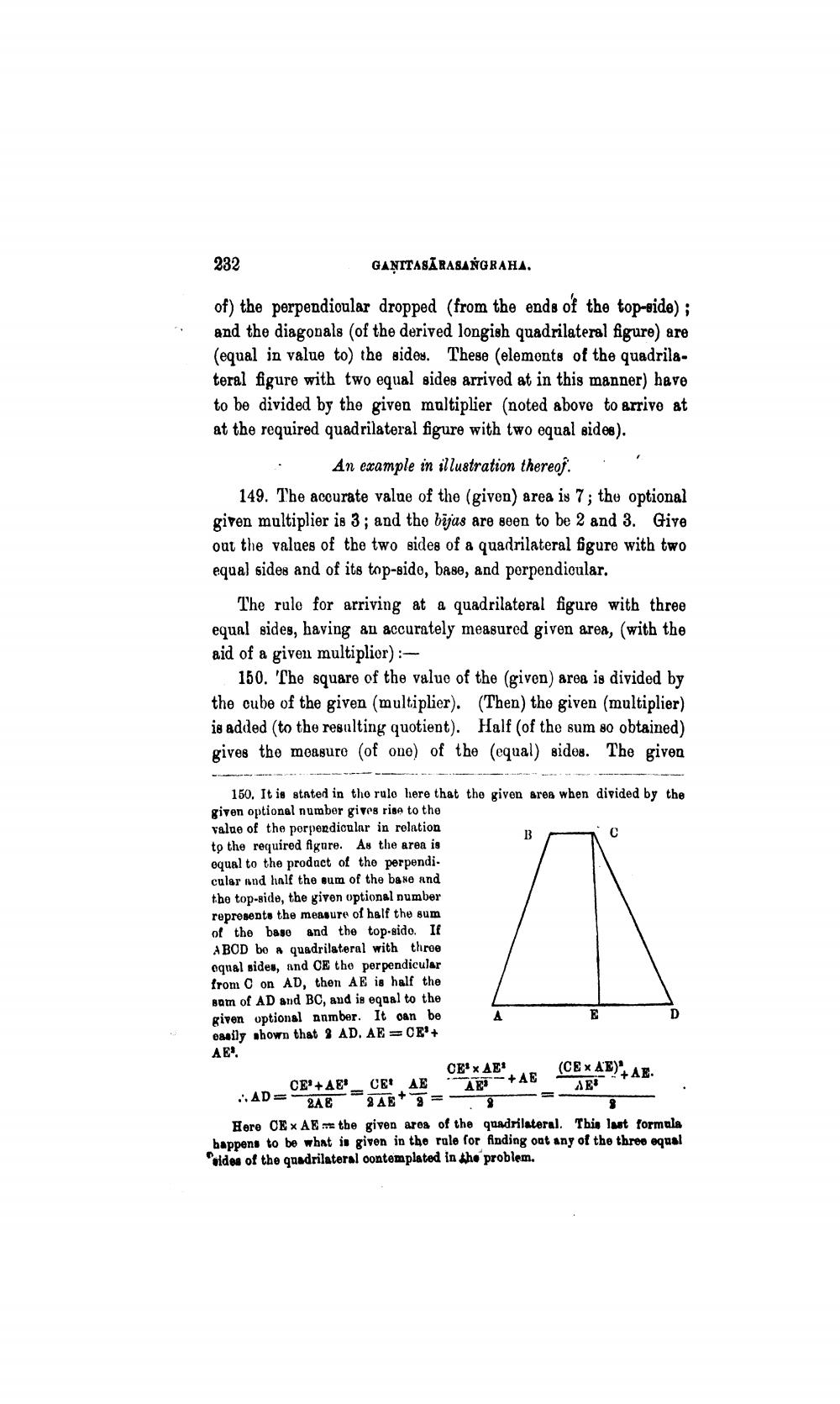________________
232
GANITASĀRASANGRAHA.
of) the perpendicular dropped (from the ends of the top-side); and the diagonals (of the derived longish quadrilateral figure) are (equal in value to the sides. These elements of the quadrilateral figure with two equal sides arrived at in this manner) have to be divided by the given multiplier (noted above to arrive at at the required quadrilateral figure with two equal sides).
. An example in illustration thereof. . 149. The accurate value of the (given) area is 7; the optional given multiplier is 3; and the bājas are seen to be 2 and 3. Give out the values of the two sides of a quadrilateral figure with two equal sides and of its top-side, base, and perpendicular.
The rule for arriving at a quadrilateral figure with three equal sides, having an accurately measured given area, (with the aid of a given multiplior) :
150. The square of the value of the (given) area is divided by the cube of the given (multiplier). Then) the given (multiplier) is added (to the resulting quotient). Half of the sum so obtained) gives the moasure (of one of the equal) sides. The given
150. It is stated in the rulo here that the given area when divided by the given optional number gives rise to the value of the perpendicular in relation to the required figure. As the area is equal to the prodact of the perpendicular and half the sum of the base and the top-side, the given optional number represents the measure of half the sum of the base and the top-sido. If ABOD bo A quadrilateral with three equal sides, and CE the perpendicular from C on AD, then AE is half the Bam of AD and BC, and is equal to the given optional anmber. It oan be easily shown that 9 AD. AE =CE+
AE!
+42
AE
+AE
AE
CE' x AE (CEAE)' AE. CE+AESCE AE. .. AD= 2AE A E 9=
Here CEAE the given area of the quadrilateral. This last formula happens to be what is given in the role for finding out any of the three equal vides of the quadrilateral contemplated in the problem.
pilateral. This Month




